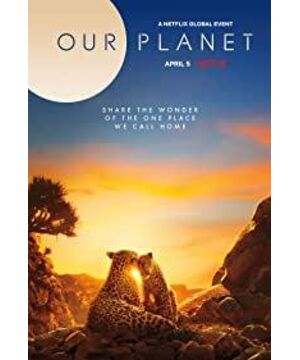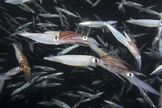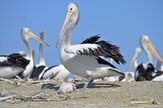"Our Planet" is a collaboration between Netflix and Silerback Films, the gold medal nature documentary production group, and the WWF, went deep into various nature reserves and produced it using the latest 4K camera technology.
From the vast ice caps to the depths of the ocean, from remote forests to the Gobi Desert, the scenes were shot in more than 50 countries for 4 years.
In addition to magnificent natural sceneries and magical animal habits, there are many heartbreaking scenes in the documentary. Recently, what has caused heated discussion on the Internet is the scene at the end of episode 2, which has cried countless viewers!
In recent years, due to climate warming, the number of glaciers in the Arctic has been decreasing. There is a set of shocking figures in the documentary: 75 million tons of glaciers collapsed in 20 minutes. It is estimated that by 2040, there will be no more glaciers in the Arctic. This will not only increase global warming and sea level rise, but also affect the living environment of countless animals and plants.
In the northernmost part of Russia, hundreds of thousands of walruses live on sea ice, where they are closest to where they prey. However, due to the small area of sea ice, what can be seen on the screen is that almost every inch of living space is occupied, and there are densely packed walruses. Stamping or crushing events happen at any time, but more terrible situations are still to come. ...
Some walruses tried their best to find space outside the group, so they climbed the 80-meter-high cliff . For the 1 ton walrus that is used to sea ice, this is an extremely difficult task, but in order to survive, in order to breathe fresh Air, they can only do this.
Dragging a heavy body, finally climbed up the cliff, but the walrus was hungry again and had to return to the 80-meter cliff to find food. But the walrus leaving the sea has very poor eyesight and can't see the path of the cliff ahead.
Hundreds of walruses set foot on the cliff, falling one after another or rolling down to the bottom of the cliff, dying, waiting for death. Why do latecomers continue to descend the cliff? Do you want to starve to death on the cliff or give it a go? Do you think they have more choices? In a blink of an eye, the corpses of the walruses on the coast were shocking...
"They are all at the forefront of climate change and are suffering from the consequences." But don't forget that it is humans that cause climate warming. Isn't humans the indirect killer of walruses? !
Although the end of the episode tells us that the process of global warming is slowing down and the biological energy on the ice layer takes a sigh of relief, walruses and more animals living on the ice do not know when their homes will disappear, and they are completely can not control their own destiny, as a netizen's comment said: people like fault, always the animals to pay!
In addition, divers can also focus on episode 4 of the documentary, with the theme of the Coastal Sea (Costal Sea) .
You can watch the spectacular Jack Storm inside,
Learned how dolphins and sharks in the shallow sea prey,
Discover the importance of sea otters to the kelp forest,
Surprised that the emergence of a large number of jellyfish is likely to foretell ocean imbalances and so on.
Every time I watch these documentaries, I feel really small. In fact, most people know the importance of protecting the environment, but have you really done anything to protect the environment? This is our planet, shouldn't it be guarded by us?
The "Atlantic Monthly" commentary explains why we have to watch this documentary: "Our Planet" is a eulogy, a confession, a punishment, and even a call to battle.
Hope that more people will really take action.
Friends who love the ocean and diving can follow Enblue Diving , thank you!
View more about Our Planet reviews








